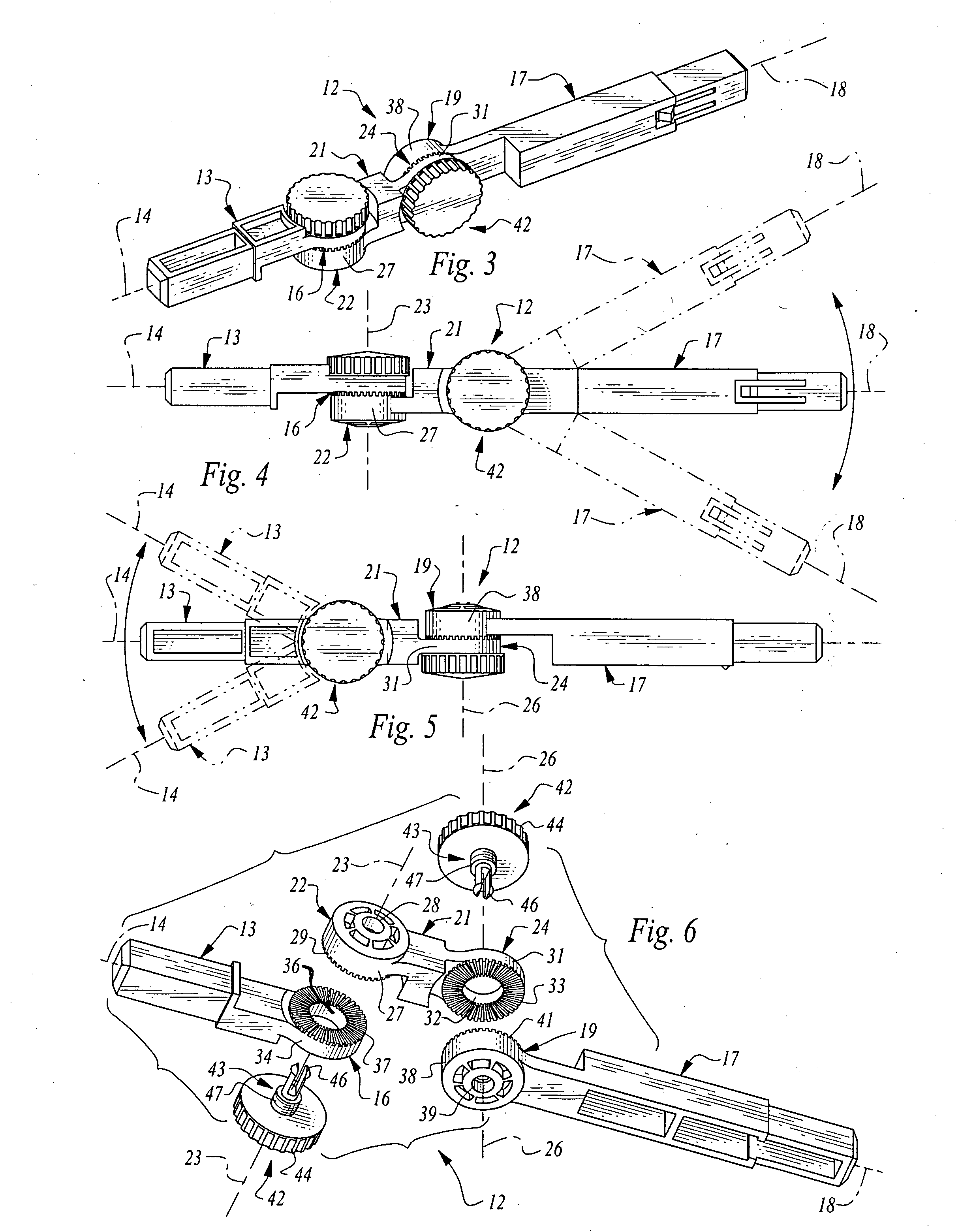Medical splinting apparatus and methods for using same
- Summary
- Abstract
- Description
- Claims
- Application Information
AI Technical Summary
Benefits of technology
Problems solved by technology
Method used
Image
Examples
Embodiment Construction
[0035]The splint apparatus 11 of the present invention comprises an articulated alignment arm 12, for modeling the orientation and configuration of an injured human limb. Alignment arm 12 includes a first elongated arm segment 13 having a longitudinal axis 14 and a respective pivot end 16, and a second elongated arm segment 17 having a longitudinal axis 18 and a respective pivot end 19. Alignment arm 12 also includes a dual-axis connector body 21 for interconnecting first arm segment 13 to second arm segment 17. Connector body 21 is provided with a first receiver 22 adapted to couple with respective pivot end 16 of first arm segment 13 and lock it at a first selected orientation about a first transverse axis 23. Connector body 21 is also provided with a second receiver 24 adapted to couple with respective pivot end 19 of second arm segment 17 and lock it at a second selected orientation about a second transverse axis 26. As is evident from FIGS. 4, 5, and 6, first transverse axis 23...
PUM
 Login to View More
Login to View More Abstract
Description
Claims
Application Information
 Login to View More
Login to View More - R&D
- Intellectual Property
- Life Sciences
- Materials
- Tech Scout
- Unparalleled Data Quality
- Higher Quality Content
- 60% Fewer Hallucinations
Browse by: Latest US Patents, China's latest patents, Technical Efficacy Thesaurus, Application Domain, Technology Topic, Popular Technical Reports.
© 2025 PatSnap. All rights reserved.Legal|Privacy policy|Modern Slavery Act Transparency Statement|Sitemap|About US| Contact US: help@patsnap.com



